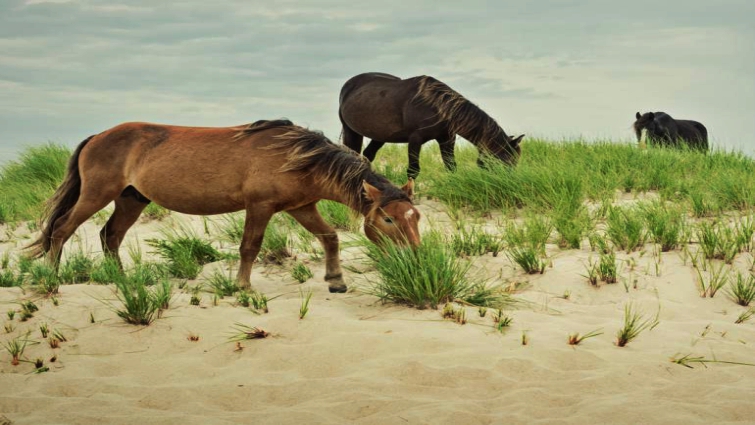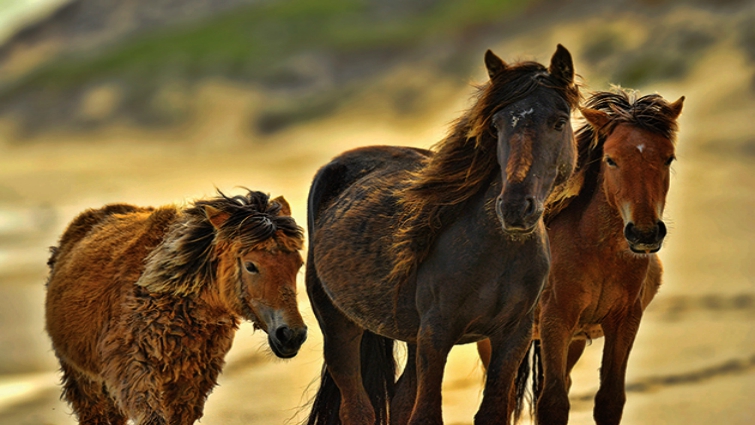There are lots of amazing places where horse populations live all around the world. There’s nothing more exciting than exploring different places all around the world to see horses. You discover not only the true beauty of nature but also mesmerizing wildlife. From Sable Island in Nova Scotia to Irish National Stud and Gardens in Ireland, here are 5 places where you can see these beautiful animals in motion.
1.Sable Island- Halifax, Nova Scotia
This beautiful place is positioned about more than 180 miles southeast of Halifax, Nova Scotia, the island, which is approximately 25 miles long and shaped entirely of sand, is a low-lying stretch of land in the middle of the ocean. Sable Island is known for its population of some 400 feral horses that have lived there ever since their siblings were added in the 18th century. One could link its climate to that of a coastal environment in maybe a country like Denmark.


2.Marwari Horses- Gundisar, India
Marwari Horses are considered amongst the world’s oldest horse breeds and the origins of them are actually are very hard to pin down, but they are considered to have been bred with the Turkmenian horses of Alexander’s army. Hundreds of years of selective breeding developed a horse that was ideal for a war on the desert territory, with an ability to survive extreme heat and cold and move immediately over long distances. All of the surviving Marwari horses are descendants of the mythical Rajput war horses. They were considered as a symbol of a feudal, socially divisive past, most were shot, castrated, or given to peasants to serve as workhorses. All the horse lovers and the few surviving Rajput families, who have been profoundly affected with tourism in the area, have saved the Marwari horses from extinction, even though their number is still only in the hundreds.


3.Salt River Wild Horses-Musa, Arizona
Salt River Wild Horses are so rare that even just catching a flash look of these special horses feels like an extra exceptional treat, as they were once intended to disappear from the land. The hundreds of horses that live within the Tonto National Forest and roam along the banks of the Salt River are technically untamed, as they’re the descendants of horses the Spanish re-introduced to North America during their conquests of the New World. However, as with most of the feral horses in the United States, they’re referred to as “wild.”


4.Irish National Stud and Gardens- Ireland
Nowadays, in addition to creating top-notch champion racers, the Irish National Stud and Gardens in Ireland gives a very limited possibility to view some of the most powerful and most handsome stallions, heroes of the track, enjoying the grand retirement that they truly deserve. The majestic legends, with names like Dragon Pulse and Invincible Spirit, live lives of luxury here and possibly it may be observed at close range while simply feeding in a paddock and swatting flies with their tails. These beautiful thoroughbreds, while kept separate in their own spacious enclosures, share the farm with many gorgeous mares who watch tensely while their bright foals approach visitors in search of attention. Babies of the finest pedigree may be spotted running in grassy pastures, their famous parents relaxing nearby. In addition to the beauty of the animals, natural enchantment is also provided by two separate gardens on site.


5.Corolla Wild Horses- Corolla, North Carolina
Corolla located in North Carolina is one of the greatest places to see the Banker horse, a rare breed that descended from the escaped Spanish stock. The Banker strain of the Colonial Spanish Mustang lives on the barrier islands of the Outer Banks. It’s one of the oldest horse breeds in the United States. They’re a little, hardy stock—so small, they should technically be classified as ponies and not horses. Their short backs and low tails make them clearly different from other types of American mustangs. Because of their relative seclusion, the Banker horses around Corolla haven’t had a chance to mix with other breeds and lose their Spanish lineage. Horse tours are one of the most important economic activities in Corolla. Because of the hordes of visitors each week hoping to catch a glimpse of the herd, authorities became concerned about the well-being of the few hundred feral horses roaming about the area. There are now beach patrols in charge of educating people about the equines and how to coexist with them. It’s illegal for anyone to come within 50 feet of the horses.


